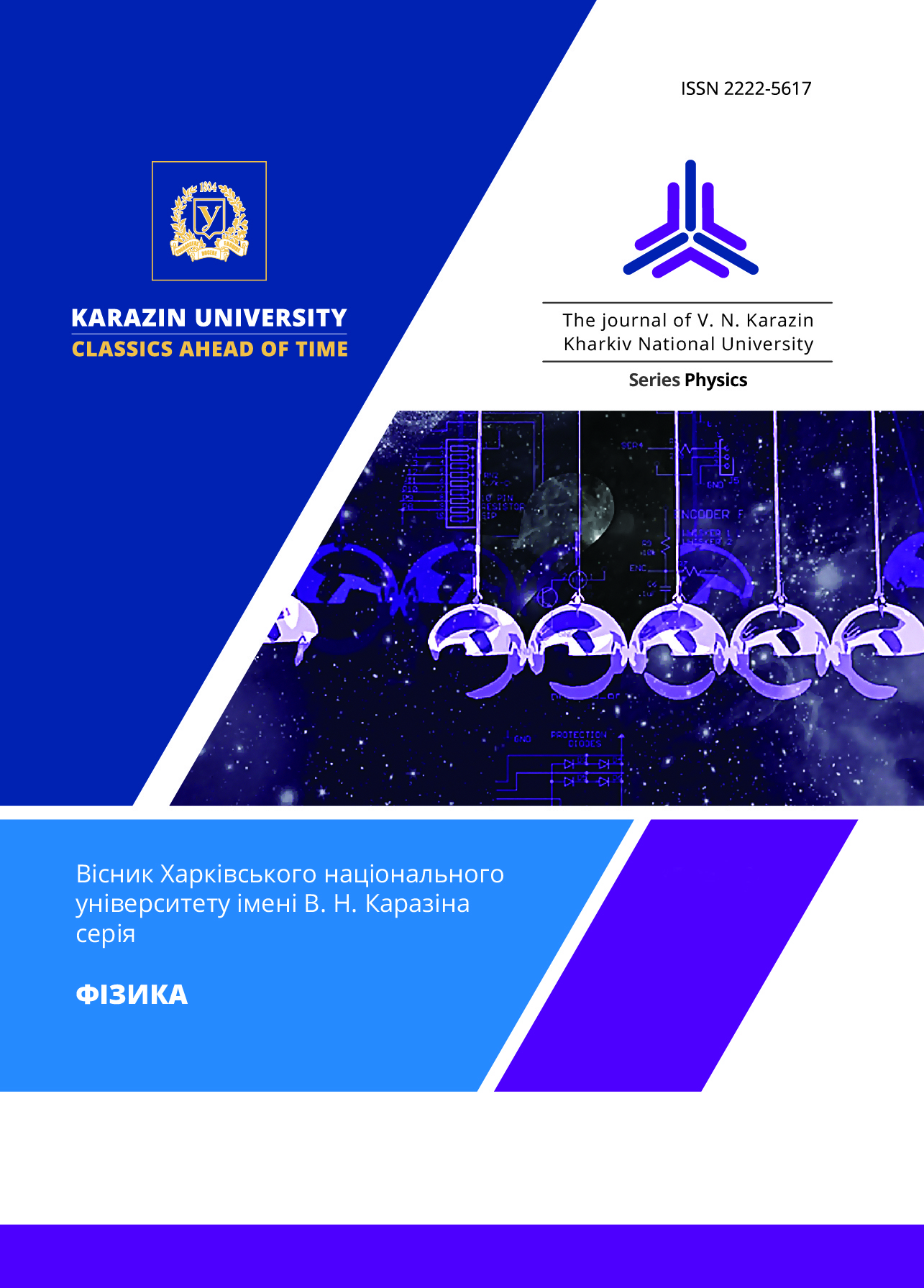Morphological structure of the Pb island films melted on the Ta layer surface
Abstract
An effective way to create self-organizing arrays of metal particles is to melt thin layers of substance on a poorly wetted surface. Such arrays may improve the technological properties of functional structures, and are themselves functional elements of modern devices and systems.
During the melting of a solid layer on a poorly wetted substrate, an array of spherical particles is formed, which are evenly distributed over the surface of the substrate. The distribution of particles by size is determined by the thickness of the fusible layer and conditions of the deposition. The location of islands, formed after the melting of vapour-crystal deposited solid films, is determined primarily by the initial stages of de-wetting, when the thin continuous film starts to decay while remaining in solid state.
This work studied self-organizing processes during the melting of Pb films deposited on a Ta substrate. The films were deposited on glass plates in a high vacuum and then after deposition were heated to a temperature slightly above the Pb melting point. After the heat treatment the samples were removed from the vacuum chamber and examined using SEM microscopy and EDS analysis.
It was discovered that arrays of spherical particles are formed during the melting of micron-thick Pb films. The histograms of the size distribution of such particles are quite wide and can be represented as bimodal with partially overlapping maxima. This can be explained by active coalescence processes in thicker samples. This study demonstrated that small temperature gradients can cause noticeable kinetic effects that allow separate particles to move macroscopic distances and capture the surrounding substance. The study also estimated the energy associated with the optimization of the morphological structure of vacuum condensate and which is a physical factor of de-wetting.
Downloads
References
2. Y. Qiu, et al. Science Bulletin, 64(18), 1348 (2019). https://doi.org/10.1016/j.scib.2019.07.017
3. C. Zhang, et al. Nanophotonics, 11(1), 33 (2022). https://doi.org/10.1515/nanoph-2021-0476
4. Z. Xie, et al. Journal of Alloys and Compounds, 861, 157999 (2021). https://doi.org/10.1016/j.jallcom.2020.157999
5. C. Ge, et al. Sensors and Actuators B: Chemical 366, 131991 (2022). https://doi.org/10.1016/j.snb.2022.131991
6. Q. Yang, et al. Advanced Energy Materials, 10(7), 1903193 (2020). https://doi.org/10.1002/aenm.201903193
7. Z. Cen, et al. New Journal of Chemistry, 46(14), 6587 (2022). https://doi.org/10.1039/D2NJ00213B
8. N.P. Klochko, et al. Solar Energy, 232, 1 (2022).
https://doi.org/10.1016/j.solener.2021.12.051
9. R.M. Shetty, et al. ACS nano, 15(7), 11441 (2021).
https://doi.org/10.1021/acsnano.1c01150
10. J. Ye, D. Zuev, S. Makarov. International Materials Reviews, 64(8), 439 (2019).
https://doi.org/10.1080/09506608.2018.1543832
11. L. Kondic, et al. Annual Review of Fluid Mechanics, 52, 235 (2020). https://doi.org/10.1146/annurev-fluid-010719-060340
12. J.A. Badán, et al. Ceramics International, 47(23), 32685 (2021). https://doi.org/10.1016/j.ceramint.2021.08.165
13. A.A. Shklyaev, A.V. Latyshev. Scientific Reports, 10, 13759 (2020). https://doi.org/10.1038/s41598-020-70723-6
14. A.O. Nevgasimov, et al. In 2021 IEEE 11th International Conference Nanomaterials: Applications & Properties (NAP), p. 9568560 (2021).
https://doi.org/10.1109/NAP51885.2021.9568560
15. M. Sriubas, et al. Surfaces and Interfaces, 25, 101239 (2021). https://doi.org/10.1016/j.surfin.2021.101239
16. O.O. Nevgasimov, et al. Materials Today: Proceedings, 62(9), 5787 (2022). https://doi.org/10.1016/j.matpr.2022.03.491
17. S.V. Dukarov, et al. In Microstructure and Properties of Micro-and Nanoscale Materials, Films, and Coatings (NAP 2019), Springer Proc. in Physics, Springer, Singapore (2020), v. 240, p. 379. https://doi.org/10.1007/978-981-15-1742-6_37
18. S.V. Dukarov, et al. Metallofiz. Noveishie Tekhnol, 41(4), 445 (2019). https://doi.org/10.15407/mfint.41.04.0445
19. S.V. Dukarov, et al. Funct. Mater., 25(3) 601 (2018). https://doi.org/10.15407/fm25.03.601
20. S. Petrushenko, S. Dukarov, V. Sukhov. In 2022 IEEE 12th International Conference Nanomaterials: Applications & Properties (NAP), p 9934108 (2022).
https://doi.org/10.1109/NAP55339.2022.9934108
21. R.I. Bihun, Z.V. Stasyuk, O.A. Balitskii. Physica B: Condensed Matter, 487, 73 (2016).
https://doi.org/10.1016/j.physb.2016.02.003
22. Y.G. Bi, et al. Advanced Optical Materials, 7(6), 1800778 (2019). https://doi.org/10.1002/adom.201800778
23. J. Guan, R.A. Campbell, T.E. Madey. Surface science, 341(3), 311 (1995). https://doi.org/10.1016/0039-6028(95)00741-5
24. C. Ji, et al. Nature communications, 11(1), 1 (2020). https://doi.org/10.1038/s41467-020-17107-6
25. C. Zhang, et al. Advanced Optical Materials, 9(3), 2001298 (2021). https://doi.org/10.1002/adom.202001298
26. V.N. Sukhov, I.G. Churilov. Adhesion of Melts and Brasing of Materials, 41, 9 (2008).
http://dspace.nbuv.gov.ua/handle/123456789/4371








3.gif)
